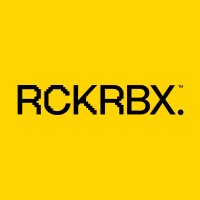'Real-Time, Nuanced Data': How RCKRBX Changed AREP's Underwriting Process

When developing multifamily homes, effectively determining the critical drivers behind customer and market demands is a nuanced process. With location and programming steering rental rates, lease-up pace and turnover, developers typically rely on market research to inform their analysis.
However, while supply-side data such as neighborhood demographics, submarket rental performance and market trends can help to underwrite a deal, this two-dimensional process doesn't give developers the complete picture.
This often results in positioning product categories, from affordable to luxury, with a standard offering of unit sizes, features, amenities and staffing. Residents' thoughts and preferences are determined after the project is built, and then the performance metrics are measured.
To understand the mind of the prospective customer, gain insight into why market shifts are taking place and determine where demand is moving, RCKRBX, a software as a service commercial real estate platform, is working to give developers a competitive edge by combining demand-side insights with traditional supply-side data.
The platform makes it possible to provide holistic, accurate and predictive pictures of a project’s future. It also gives clients a three-dimensional analysis of the market — including real-time demand-side insights around the preferences, priorities, attitudes and viewpoints across customer segments — that enables better, more informed decision-making, according to RCKRBX CEO Michael Broder.
“The standard way you gather market data is to have a research firm conduct studies on what’s happened with recent deliveries in your submarket, including rent prices and pace, popular amenities and more,” said Mark Taylor, managing director of residential at American Real Estate Partners.
Taylor said that when it comes to underwriting a deal, it is essential to combine market research, proptech and SaaS with insight and analysis from AREP’s investment and property management teams.
“We leverage traditional, digital and empirical data to accurately understand the bigger picture and drive an optimal outcome,” Taylor said.
AREP uses RCKRBX to supplement its predictive rent pricing and growth, as well as to understand from qualified prospective customers what products, features and amenities they value, Taylor said.
The platform’s software is “forward-projecting,” using demand-side data that forecasts trends from a tenant perspective to better align with end users.
“There is the traditional way to do business, and while it has its merits, it is only a two-dimensional view,” Taylor said. “We wanted a way to accurately see what’s happening in the market right now and why. RCKRBX does exactly that.”
RCKRBX uses polling strategies such as online surveys and social media recruitment to pinpoint where demand is heading. It breaks down prospective renters’ demographics, psychographics and preferences for particular building features or amenities into different categories that the developer can then sift through to make educated, data-driven decisions.
When AREP first brought RCKRBX in to evaluate the programmatic elements of its multifamily project in Old Town Alexandria, Virginia, the team was surprised by its findings — and doubtful.
“Our team was in the midst of underwriting CityHouse Old Town, an office-to-luxury residential conversion project, when RCKRBX went live in 2022,” Taylor said. “We asked them to provide supplemental insight on unit performance in the market, and their rent projections came out markedly higher than what we had underwritten, which surprised us.”
While the team initially questioned the rents that RCKRBX had predicted, a year later, AREP is seeing rent prices in this market meet and exceed those predictions. Taylor said RCKRBX had picked up on what the traditional market study approach hadn’t captured yet: the pandemic-induced shift from Washington, D.C., to the pedestrian-friendly urban atmosphere of Old Town Alexandria and the extent to which it was going to drive demand and pricing.
In Ashburn, Virginia, the AREP team was underwriting CityHouse Ashburn Station, a luxury build-to-rent townhome complex, when it ran into an issue: There was no historical competitive set that accurately reflected these types of homes. Even the baseline supply-side data was limited in providing any directional guidance. However, RCKRBX provided data that further informed AREP's decision. This is why the platform has become a key element of AREP’s rent projection process, Taylor said.
“This platform provided real-time, nuanced data that clarified our underwriting approach and substantiated the investment value of CityHouse Ashburn Station,” he said.
Looking forward, Taylor said he is confident that RCKRBX will expand into other markets and hopes it gets more broadly adopted in the industry. He said the platform's capabilities are invaluable.
“We want our analysis and underwriting to be three-dimensional," Taylor said. “Our residential investment partners see how RCKRBX rounds out our approach.”
This article was produced in collaboration between the RCKRBX and Studio B. Bisnow news staff was not involved in the production of this content.
Studio B is Bisnow’s in-house content and design studio. To learn more about how Studio B can help your team, reach out to studio@bisnow.com.

